A GRADUAL RECOVERY
Impressive response from our sports turf industry
by TurfPro Editor, Laurence Gale MSC, MBPR
The grass does not stop growing, so we must continue to what we do best and get on with safely maintaining our parks, open spaces, estates, school playing fields and sports facilities.
It would seem from conducting some recent conversations with industry colleagues that we are now seeing a steady, but restrained return to normality in terms of public welfare and optimism in dealing with this crisis. And at long last we are seeing a steady, consistent fall in Covid cases, resulting in fewer deaths.
As for our industry, the grass does not stop growing, so we must continue to what we do best and get on with safely maintaining our parks, open spaces, estates, school playing fields and sports facilities.
During the lockdown we have seen via social media, many examples of the dexterity, innovation and determinedness of our grounds managers and staff who have been working tirelessly under difficult measures to maintain their facilities – a great example being Karl McDermott at Lords.
I was speaking to a fellow editor last week and we discussed the fact that we had both seen and heard so many positive responses to this crisis and were impressed how our sports turf industry was dealing with and working through this crisis. Also encouraging was the fact that we as an industry will more likely come out of this crisis fairly unscathed compared to other industries.
Yes, we are dealing with unprecedented events, but at the same time seeing many good things happening in terms of responses to dealing with Covid-19. Our industry in my eyes, has always been unique and vibrant in that we are a band of brothers who work hard to meet the many challenges we face when maintaining land based facilities.
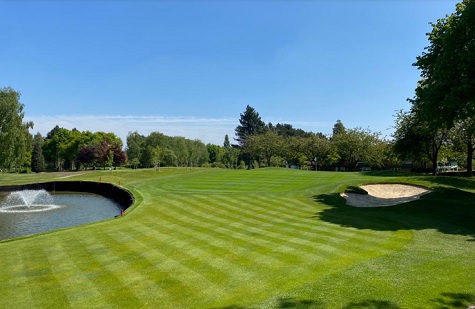
There has always been, in my experience, a fellowship and respect for one another and a common goal in producing the best we can with the resources we have at our disposal. But above all we have always had a trait of helping one another. This can be seen in the attitude and resolve of many of practitioners as recently highlighted in two recent TurfPro golf articles featuring Olton GC and Robin Hood GC in Birmingham.
During the crisis we have seen the important role that our public parks and open spaces have played in allowing many thousands of people to get some respite and important exercise during the lockdown. Now, with further restrictions lifted in England, people are able to make greater use of these wonderful assets.
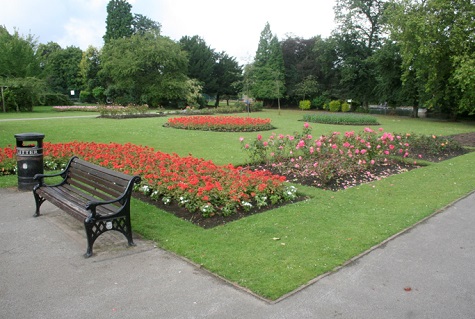
I and many parks officers up and down the country are hoping that after this crisis we will see more government investment in these vital public facilities. A recent Cabe Space report said it is estimated that each year well over half the UK population – some 33 million people – make more than 2.5 billion visits to urban green spaces alone. Not surprisingly, people become attached to these parks, gardens and other open places, and appreciate them for what they offer culturally, socially and personally. In research carried out for CABE, 85 per cent of people surveyed felt that the quality of public space and the built environment has a direct impact on their lives and on the way they feel.
I firmly, believe that local authorities will finally get the much-needed funds, or a revised funding regime, once this crisis is over for the long-term management of these vital assets.
However, we must not lose track of what other issues we may face after this crisis has run its course. There will be many businesses, sports clubs and jobs lost due to the consequences of Covid-19 and the fact that getting back to normality will take longer than people think.
It will be interesting to see how many people are able and indeed willing to return to our industry once this pandemic is over. We already know we are facing difficult times recruiting youngsters to come and work in our industry. Many may like the thought of working outdoors, but when push comes to shove, the reality of the job for many starting out at the coal face is that it is a manual job, that often means working weekends and not always that well paid.
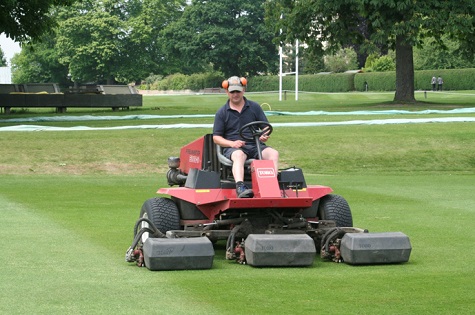
Recruiting new blood into the industry will be a vast challenge for us all, across all sectors of our industry, whether it be football, golf, schools, local authorities, manufacturers, dealerships, the problems remain the same. We have been tarnished for many years with the reputation for low pay and little recognition for our skills and knowledge.
I personally do not see it this way. I truly believe that working in our diverse sports turf / horticultural industry gives us so many unique opportunities to work anywhere in the world and enjoy a lifestyle that is varied and interesting, that the amount of money you are earning is not essentially the driving force in the job you a doing. It is really about the effect you can have on the environment and the benefits you get from seeing people enjoy the fruits of your labour.
I have spoken about this subject in previous blogs and, as many of us know, pay and working conditions have improved immensely along with the wide variety and scope of skills required to work in our industry.
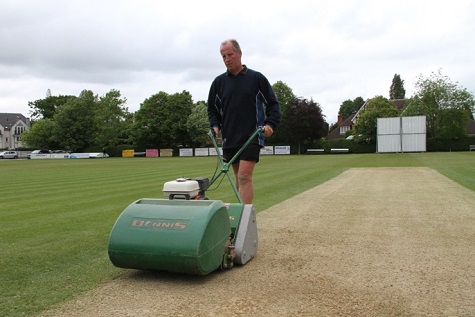
I personally believe we may benefit from a joint effort, that is to say, run a national recruiting campaign encompassing all our national institutions, such as BIGGA, GMA , BAGMA, R&A , professional sports clubs, Fields In Trust, Parks Alliance, APSE, educational colleges and major manufacturers / businesses. All with the aim to engage with the next generation and encourage them to come and work in our wonderful industry.
For example, take the professional football industry. In my discussion with my fellow editor we thought they have a great opportunity and a very easy means to market and promote the important role that their groundstaff play in maintaining and producing the playing surface for their elite pro footballers to display their skills and create the theatre we know as the Premier League.
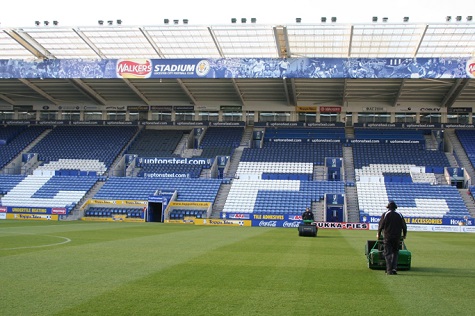
All it would take is a few promo photos displayed in and around the stadium of their groundstaff working both in the stadium and at training grounds. That way the fans and supporters get to see the work being done to facilitate the professional game.
This would certainly raise the profile of the groundstaff and give them the recognition they deserve and perhaps enable new blood to want and come and work in our industry. This could be rolled out at all major sporting venues and would no doubt raise the profile of our industry.

My final two observations for this week was brought about by the fact I was invited to attended a webinar meeting organised by Simon Morley of on behalf GPSV, a company who specialise in the sale of ex-MOD – NATO and ex-PLC Trucks, machinery and specialist vehicle sales.
The aim of the meeting was to catch-up with a number of their customers and clients and see how they were coping during the current lockdown. Invited were a number of councils, manufacturers and machinery dealers. Most local authorities mentioned how they were deploying staff and what their plans were for offloading and buying new fleet and machinery. It would seem several councils were extending some contracts and waiting to see the outcome of the Covid crisis before committing to investing in more machinery and fleet sales. And in the main most dealers and manufacturers were being very accommodating and helpful throughout the crisis.
Finally I caught up with Professor John Moverley from the Amenity Forum who kindly told me how they were coping during the crisis. He said, “The pandemic has changed the way that we all live our lives and its consequences will be long lasting and very painful for many.
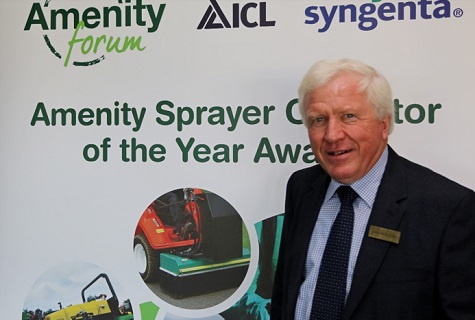
“It has highlighted the importance of health, safety and sustainability. It has also brought to the fore the importance of amenity management, keeping our amenity spaces safe and fit for purpose, maintaining transport networks, our parks and more. It is vital that all of us can be assured that the operations undertaken are of the highest professional level undertaken by trained and qualified staff. In that context the launch of the Amenity Standard earlier this year is well timed and highly relevant. For those using services it is a sign of quality and assurance that the work undertaken is of the highest standard.
“Out of challenge always can come positive. As a Forum we will certainly use it to emphasise how important what the sector does is to everyone and why it is important to seek out professionals committed to best practice. We also have welcomed the emphasis Government has put on science and facts and will look to build on that in discussions on the use of pest, weed and disease management techniques.
“The review of the UK National Action Plan is on-going and we are feeding into this. The next plans are likely to be built upon a UK framework but with individual plans for each nation. Over recent weeks I have been producing video clips focusing on the issues being discussed. These can be found at the Amenity Forum YouTube site.”
I cannot sign off without a mention of Captain Tom Moore who is to be knighted for his fundraising efforts after a special nomination from the prime minister.
The war veteran raised more than £32m for NHS charities by completing 100 laps of his garden before his 100th birthday in April.
Capt Tom, who was given the honorary title of colonel on his 100th birthday, had initially set out to raise £1,000 for NHS charities by walking laps of the 25m (82ft) loop in his garden in Marston Moretaine, Bedfordshire.
But he eventually raised a staggering £32,794,701 from more than one and a half million supporters - and for that, we salute you!
 |
|
 |  |
SALTEX 2020 POSTPONED
Rescheduled to March 2021
This week's WEB ONLY story is the Grounds Management Association’s Board of Directors announced last week they have taken the unanimous decision to move SALTEX to early Spring 2021.
EMERGENCY AUTHORISATION FOR ACELEPRYN REAPPROVED
For 2020 season
The use of the insecticide, Acelepryn, for the control of chafer grubs has been reapproved for the 2020 season.
The Emergency Authorisation for the use of the Syngenta insecticide, Acelepryn, for the control of chafer grubs has been reapproved for the 2020 season.
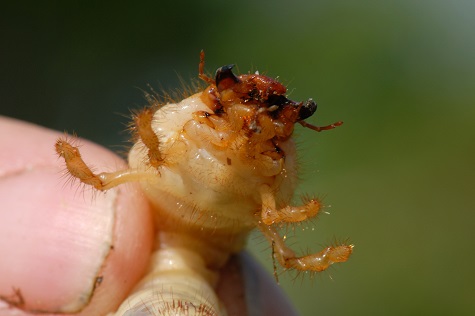
Target chafer grubs early before they reach most damaging late instar stages
This season, the initial chafer grub specific authorisation permits use of Acelepryn on affected greens, tees and fairways, along with horse race courses and airfields. The treatment period is up until 30 August 2020.
An Emergency Authorisation has also been submitted for the treatment of leatherjacket infestations, which would enable application through to the end of October.
This extended dual authorisation approach would enable turf managers and agronomists to more effectively cover the wider window for key chafer grub and leatherjacket treatment timings - which coincide with the pests’ egg hatch and initial larval activity.
Chafer grubs and leatherjackets cause damage to turf through extensive feeding on roots, which can be severe in localised patches. Surface stability, where grubs have chewed through turf roots, is of hugely significant concern for race courses.
Furthermore, extreme damage can occur in all turf surfaces when badgers, birds and other foragers root through turf in search of the grubs.
The Emergency Authorisation permits Acelepryn use in situations where there is an acknowledged instance of economic damage, or risk of bird strike on airfields, and where the product has been recommended by a BASIS qualified agronomist.
This season, for the first time, Acelepryn users will be able to submit online stewardship records of areas treated, via the ICL website.
”Over recent seasons the economic damage from chafer grubs and leatherjackets has been of major and increasing concern,” reported Syngenta business manager, Daniel Lightfoot. “Obtaining this Emergency Authorisation of Acelepryn enables us to manage the most damaging effects of these soil pests as part of an integrated turf management programme.”
Daniel advocates the best results have been achieved with applications when young larvae are actively feeding near the soil surface. “It’s crucial to use higher water volumes, using the white O8 XC Nozzle to target the spray through to the soil surface,” he advised. “Irrigation will help to move the spray into the target zone.”
The authorised label permits application at the rate of 0.6 litres per hectare, applied in 500-1000 l/ha water.
An online turf pest ID guide, to aid the identification of adult stages of key target soil pests and target application timing, is now available on the Syngenta GreenCast website. The allied Pest Tracker on-line reporting system is also building a picture of pest activity across the UK and Ireland, to anticipate issues and aid application timing.
For further information on best use guidelines where chafer grubs and leatherjackets have caused economically damaging effects contact an ICL Area Manager or BASIS agronomist.
 |  |
EXPERT URGES CONTROL OF CHAFER BEETLE NUMBERS NOW
For effective control
Now is the time to start monitoring chafer beetle numbers to allow effective control of their vulnerable offspring with entomopathogenic nematodes, advises an industry expert.
Now is the time to start monitoring chafer beetle numbers to allow effective control of their vulnerable offspring with entomopathogenic nematodes, advises an industry expert.
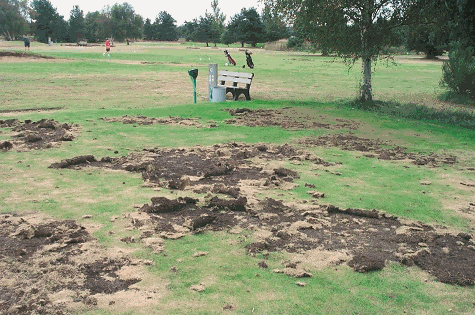
“Chafer grubs can be extremely damaging to golf courses and with limited chemical options available for controlling them, the use of entomopathogenic nematodes can be an effective and natural way to protect courses this season,” explains Dr Colin Mumford, technical manager at Bayer.
To get the application of nematodes right, Colin explains that timing is crucial.
“Over the past few years, we’ve seen that chafer beetles have been emerging six weeks later than normal, so it’s important to start monitoring for activity during May and continue to do this throughout the season,” he says.
“This can be achieved by simply looking for the beetles, but to get a more definitive measurement I would use pheromone traps,” says Colin.
“The beetles are usually active for a couple of weeks, so look for the point when their numbers start to decline in the traps. You should plan to apply the nematodes three-to-four weeks after this point, as the eggs they have laid would have hatched by then.
“By getting this timing right, the nematodes will be primed and ready to attack the chafer grubs at their most vulnerable stage, when they are newly hatched or juvenile,” he says.
Colin notes that it is also important to get the application process right as well as the timing.
“Pick an overcast day with a soil temperature above 12ºC to apply the nematodes, as direct sunlight will kill them and cold temperatures will limit their activity,” he says.
“Irrigate the area the day before to ensure there is adequate moisture for the nematodes, and it will help them move through the rootzone.
“Make sure to remove all filters from your sprayer and spray nozzle, as this can cause blockages,” adds Colin.
He also explains that it is important to use whole packs, if possible, as some will contain more than one species, that won’t be evenly distributed throughout the pack, so by using whole packs you’ll get a good mix of species.
“For example, Bayer’s nematode product, Harmonix Tri-Nema, contains three different species of nematode,” he says.
“This combination of nematodes provides better control of the grubs because each species tries to outcompete each other to become the dominant species, meaning they are far more aggressive than they would usually be.”
Colin adds that it is important to maintain good soil moisture for a couple of weeks after the application, but warns not to over irrigate, as you will either flush the nematodes through the rootzone and down the drain, or simply drown them.
“Nematodes can be a very good option for controlling chafer grubs, but it’s important to get the timing right to target the grubs when they are at their most vulnerable to maximise control,” he concludes.
 |  |
GAME CHANGER FOR LA GRANDE MARE GC
Transforms greens
Course manager, Rick Hamilton, says the Air2G2 GT Air Inject from Campey has made a massive difference in his greens in terms of playability and root development.
Course manager at the La Grande Mare Golf Club in Guernsey, Rick Hamilton, has said that the use of the Air2G2 GT Air Inject from Campey Turf Care Systems has played a significant role in transforming his greens.
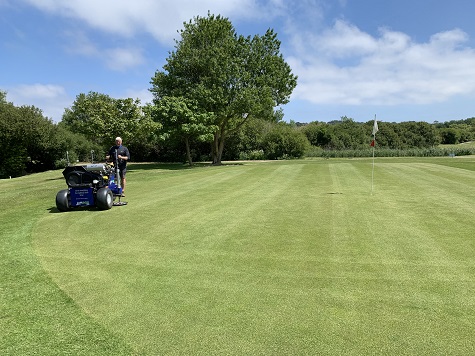
The Air2G2 at La Grande Mare GC Guernsey
When he arrived at his new job two-years ago, Rick spoke to the members about their main concerns and the quality and playability of the greens was top of the list.
Because the course is built on marshland, the soil is very silty heavy clay, making it a problematic soil profile to produce a healthy root zone. The dense profile was causing the greens to hold moisture in the winter and hardpan in the summer, meaning there was little control of how they performed throughout the year. From his previous experience in Asia, Rick knew the Air2G2 was what was needed to open up the soil profile and bring life back into the greens.
“When I first analysed the greens, I knew we had to take action,” Rick explained. “It was at the point that when we tried to change the holes, we would sometimes snap the blades in the hole cutter because the greens were that hard. The greens are old, they are 25 to 30-year-old push-up greens, so there is no drainage, and the soil type doesn’t help with that.
“For me, the Air2G2 is a game changer. Every now and then over the years, different machines come into the industry, and I would say it is one of those game changing machines. I brought it over on hire from a dealer in Jersey and went out, and I could hardly get the probes to inject at first because the surface was that hard. But I managed to do it with the deep probe and close spacing to really get through into the greens and loosen them up to get water and wetting agent in.
“The first afternoon after we did it, the members came out and played and couldn’t believe there was no disruption to the surface at all, and they were surprised with how clean it was. A few weeks later on we had a bit of rain, and we had a competition and the good golfers couldn’t believe how receptive the greens were with the ball holding.
“The difference in the greens is massive in terms of playability, root development, the health in the root zone and getting the water to penetrate. And in the winter when it’s a bit wetter and softer, it helps to release some of the water and get the greens to drain.”
For Rick, the impact of the Air2G2 was immediate, and after using his own machine for a year, the difference is obvious for everyone who plays La Grande Mare. Because of the course construction and location, there is an extensive aeration programme in place that sees the Air2G2 used regularly along with needle tining, a combination that has made members the happiest they’ve ever been with the greens.
 |  |
REESINK SAY PARTS DELIVERY IS WORKING
New normal under lockdown
"Customers should not have noticed any difference," says parts manager Michael Hampton.
Reesink UK have said their parts supply system has maintained delivering customers what they need during this period of lockdown.
Michael Hampton, Reesink’s parts manager said, “Of course the situation is far from normal, but what we have here at Reesink is a new normal. One which we’re delighted to say is working.
“Customers should not have noticed any difference with regards to parts ordering and support. We have a complete range of all items in stock and we’re still able to have orders ready for dispatch in ample time for delivery within 24 hours to our customers.
“We have experienced some issues with our carriers, but those problems were expected, we had a contingency and they didn’t last long. So far we have been able to deliver our customers’ requirements whether that’s delivering to their location or via non-contact collection.”
Michael says most orders pertain to maintenance and repair work: “The majority of our orders are for repair work to keep essential equipment operational and working safely. Contacting us for genuine spare parts is the same as it always was for customers. Emails, phone and internet are all running as usual and there have been no delays to responding to our customers’ enquiries.”
Reesink, who is the UK distributor for Toro golf and sports fields equipment, grounds machinery, irrigation products and genuine Toro Parts, say they have been continually impressed - and thankful - throughout these weeks of lockdown for the people working tirelessly throughout the entire supply system that has meant it’s seemingly business as usual for its customers.
Michael concluded, “Maintaining business as usual in these unprecedented times takes a village and everyone has stepped up to continue delivering the kind of reassurance the company strives to give customers, lockdown or not."
 |  |
LABEL UPDATE ALLOWS YEAR-ROUND USE OF HERBICIDE
Lockstar from ICL
The label update includes extended use of the product meaning that LockStar can now be applied all-year round instead of the previous limited window between February and June.
ICL has announced an update to the UK label of its residual herbicide, LockStar, which they say will provide users with more effective and flexible weed control.
The label update includes extended use of the product meaning that LockStar can now be applied all-year round instead of the previous limited window between February and June.
ICL say this will provide contractors and grounds managers with the opportunity to adapt their approach and give them greater control over weed growth.
Previously, LockStar could only be used on natural surfaces not intended to bear vegetation.
However, the new label update grants the use of the product on amenity vegetation (around). This will allow for the herbicide to be applied in a wider range of situations and be used in areas such as around the base of unsusceptible shrubs, trees, plants and other amenity areas. Full details on plant species can be found at www.icl-sf.co.uk.
The product should be applied at a rate of 500g/ha.
 |  |
JCB BEGIN SELLING MACHINES DIRECT ONLINE
Added option during lockdown
JCB has sold their first machine via their new order online option, launched to support businesses with their requirements during the Covid-19 lockdown.
JCB has started to sell machines online for the first time in its history.
The company say they have introduced the new order online option to support businesses with their plant requirements during the Covid-19 lockdown.

Focal Landscapes owner Marc Woodward
A Poole-based company called Focal Landscapes became the first customer to purchase their machines online, buying a 8008 micro excavator and a HTD-5 tracked dumper direct via the website direct.jcb.com - with the manufacturer saying order to delivery took less than a week.
Focal Landscapes owner Marc Woodward said, “You get all the benefits of an online purchase, but you also start a relationship with the manufacturer. That gives access to JCB Finance and JCB support. I’ve already been introduced to my local JCB dealer Holt JCB and been able to purchase a range of attachments for my new excavator."
JCB UK and Ireland sales director Steve Smith said, “We are determined to support our customers’ machine requirements during the challenging current Covid-19 crisis. The new service gives customers the ability to buy some of JCB’s most popular products online, directly from the manufacturer, with no need to meet face-to-face or leave their homes.”
The JCB machines available to purchase on line are the 8008 micro excavator; the 16C-1, 18Z-1 and 8026 mini excavators; the HTD5 Dumpster; the 1T-2 site dumper and S1930 and S2632 scissor lifts.
Available to UK mainland customers, buying online using JCB Finance, website visitors select the model and pay a £100 ’holding fee’ to secure their machine.
They will then be contacted by JCB Finance to complete the application and the machine will be delivered by JCB.
 |
|
 |  |
ADVERTISE YOUR JOBS HERE
Amazing success rates!
Advertise your recruitment needs on TurfPro Weekly Briefing and reach our targeted audience of recipients every week.
Contact Nikki Harrison for details - 01491 837117
|
 |  |
 |  |
 |  |
 |  |
 |  |
TIME FOR A SINGLE SHOW?
Debate brought back into focus
by Laurence Gale, TurfPro editor
The postponement of SALTEX 2020 raises many further questions about our industry shows and how we may need to move forward regarding their timing and format.
With so many sporting events still shut down and no further news on the restriction of mass gatherings, I not surprised by the GMA’s announcement of the postponement this year’s November SALTEX at the NEC.
We can all understand their valid reasons for the decision. In their statement last Tuesday (19th May) they explained their actions, saying, “In light of continued restrictions surrounding mass gatherings, combined with the unprecedented impact on all of us from Covid-19, the Grounds Management Association’s (GMA) Board of Directors has taken the unanimous decision to move SALTEX to early Spring 2021. This outcome has been guided by discussions with key industry bodies, as well as exhibitors. Like everyone else, the GMA has continued to follow Government guidance, and the science involved, to guide its business during this unprecedented time. Despite early optimism, a decision has been made to move the exhibition to March 2021 – taking into account the best interests of all parties involved."

You can read the rest of what the GMA had to say, here.
For me, it raises many further questions about our industry shows and how we may need to move forward regarding their timing and format - and indeed it may even lead to an opportunity to develop a single show format, that many have spoken about for years.
With the GMA being forced to move SALTEX where does that leave BIGGA with their popular BTME event in Harrogate next January?
I managed to speak to a representative of BIGGA who told me they are still hoping their show will go on as planned, but was keen to point out that they been having regular discussions with the Harrogate International Centre on what could lie ahead.
In an official statement they said, “BIGGA is incredibly proud that the Harrogate Convention Centre, which hosts BTME each year, has been established as an NHS Nightingale Hospital, ready to accept patients relating to the coronavirus pandemic, should the need arise.
“We’ve been in constant contact with the team at the convention centre throughout this period and their hard work and openness through a difficult period should be applauded.
“We’re continuing to progress with our plans for hosting BTME and Continue to Learn, such as the recent launch of the Member’s Choice survey, but we are also putting contingency plans in place should it not be possible to host a gathering of 6,000 industry representatives from across the globe next January.” Therefore, we must watch this space.
It will be interesting on how it all pans out. Will, BTME Harrogate be forced to move dates? Will SALTEX prosper in its new year March slot? March is usually a very busy time for grounds professionals, so will exhibitors be able to support both shows after suffering such a tough time during this Covid-19 pandemic?
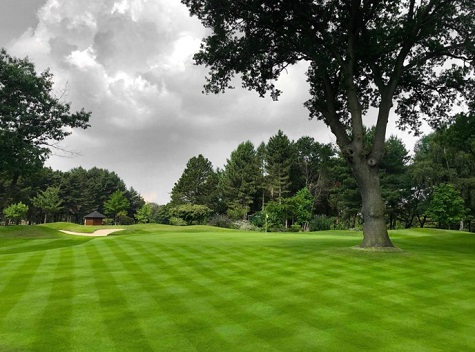
I enjoy attending both shows as they offer different opportunities. BTME is centred around the golf greenkeeping industry offering training and education along with exhibitors showing off the latest range of industry machinery, products and services. Coupled with the fact that Harrogate offers a unique networking experience in and amongst all the bars, restaurants, and cafes.
SALTEX on the other hand, is focussed on the more general sports, football, rugby, cricket, tennis and bowls, along with catering for local authorities, schools and landscape professionals – being held at the NEC Birmingham. Again, SALTEX delivers education and training along with showcasing over 500 exhibitors.
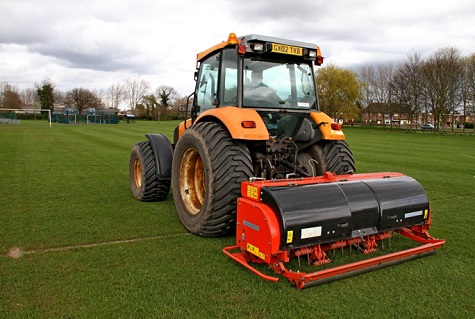
The attendance figures for both most recent shows tell an interesting story. BIGGA declared that they welcomed 4,500 individual delegates into the halls of the Harrogate Convention Centre last January.
Whereas, the organisers of the SALTEX exhibition described last year’s attendance as "record breaking" with 9,104 visitors in attendance over the two-day show.
I passionately believe we as a land-based industry should be seeing a lot more people attending these shows. Especially when you consider the many thousands of people who are employed and work in this worldwide diverse sports turf / horticulture industry.
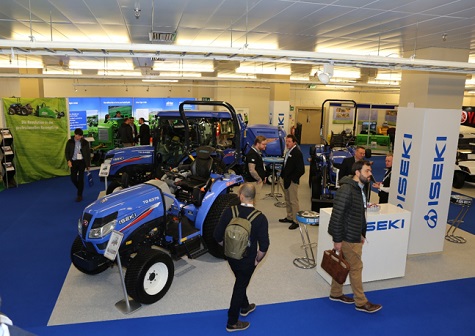
I also spoke to David Withers at ISEKI who said it was inevitable that Covid-19 may affect the shows - but was keen to state that they as a company would be continuing to support shows. However, personally for many years he himself has being campaigning for a single show format bringing both BIGGA and GMA together for the good of the industry.
As for touting for a one industry show, I myself, along with many others, have campaigned for this over many years.
I do understand their reasons, why both GMA and BIGGA are wanting to retain their separate shows. Both shows are at present centred around the needs of their members and the greater good of our industry and they both raise much needed funds for both organisations.
Our industry is constantly moving forward. New technologies and advancement in video / virtual conferencing along with many new ways of working and the fact we now have access to many social media platforms will no doubt influence the way we conduct business in the future. Covid-19 has already started this process and in fact may over time have a greater influence on the future of our two industry shows.
I personally think that the aftermath of Covid-19 will force a rethink and bring about many changes to the way we work and promote our industry. I would like to see a coming together of both the GMA and BIGGA and maybe look at attracting other potential horticultural organisations to create a new show that ticks all the boxes.
Any new single show should include indoor and outdoor exhibition areas plus training and education seminars - effectively a single show taking on all the positive facets of the current shows, while still enabling both parties to earn their much needed income streams.
We as an industry should be able to facilitate an annual three day UK / international trade show that has the capability to attract well over 20,000 attendees.
This would make it a worthwhile show for all concerned, while at the same time enabling us to promote and attract new blood into the industry.
 |
|
|
|